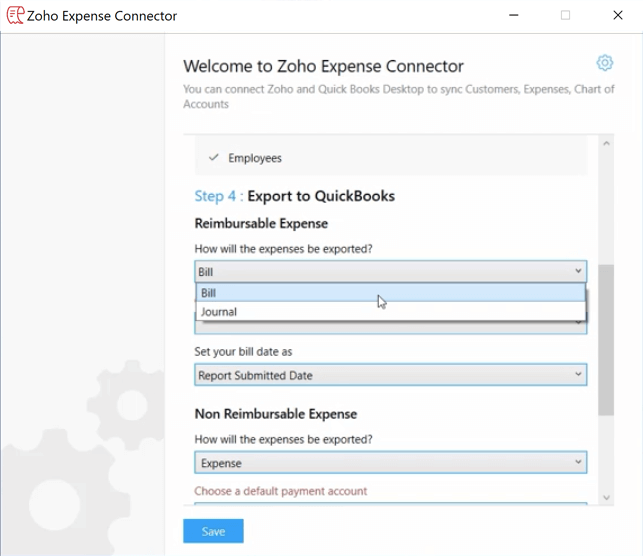
Also, be sure to keep receipts as backup for the cash purchases you make with your personal funds on behalf of your business.) Option 2 – Invest the Funds in Your Business When you are ready to reimburse yourself for the balance, you will again use the “Pay Bill” feature to complete the payment. If you will be taking the reimbursement in portions, you should create a bill with all the expenses listed, then use the “Pay Bill” feature to pay the portion of the bill you want to receive.
RECORDING PERSONAL EXPENSES IN QUICKBOOKS FULL
( NOTE: Use the “Write Check” feature only if you are paying the full reimbursement. This option is most suitable for a Corporation. Then, write a check for the expense report total, allocating each expense to its relevant company expense.

In addition, keep a copy of the personal credit card statement in the business files to serve as backup for the expenses. All receipts that are company related that the funds were used for, should be attached to this expense report so that all vendor details are part of the company records. Fill out an expense report just as you would expect any other employee to do, in order to be reimbursed.This option is not suitable for a Corporation. You will then write a check to yourself using this current liability account in order to clear the balance and reimburse yourself. Create a Current Liability account and call it something like “Owed to Owner”, then enter the transactions in this account where the credit card and other expenses will be easy to track in the event of an audit, with the exact amounts and vendor details listed.This option can be used regardless of your business structure. Then, pay yourself with a check using the “Pay Bill” feature when you are ready to take your reimbursement. Setup yourself in QuickBooks as a vendor and create a bill for your expenses, allocating them to the relevant business expenses the funds were used for.Here are a few to deal with this one: Option 1 – Reimburse Yourself With QuickBooks, there are usually more than one ways to deal with various scenarios.

Do you have any idea how you will track PPP expenses? If so I can better answer your question.The correct way to enter business expenses that you have paid for with your personal credit card, debit card, or cash in your company’s QuickBooks, will be based on whether you want to invest this money in your company or reimburse yourself for it, as well as the type of business structure your company is setup as – Sole proprietor, Single member LLC, Multi member LLC, or Corporation. I know this answer may not directly address your question but that's because there are a number of factors involved and it isn't straightforward.

Depending on how you are planning to track PPP expenses will determine how you record in QB the expenses that are ineligible for forgiveness. You can run a Payroll Summary report to find out the total of the employer FICA and FUTA expenses. However since the employer FICA and FUTA are not eligible for forgiveness you will need to back out those expenses from your Payroll Calculations (if you are manually tracking expenses). State Unemployment).īy default QB assigns company-paid payroll taxes to the Profit and Loss Statement (often under the "Payroll Taxes" or "Payroll Expenses" category). The expenses you are interested in for payroll loan forgiveness are the Gross wages as well as the any state or local taxes that the company pays (i.e. If you are using the QuickBooks Payroll service then you won't have to worry about the employee withholdings because QB keeps those taxes as a liability on the Balance Sheet until they are paid.


 0 kommentar(er)
0 kommentar(er)
